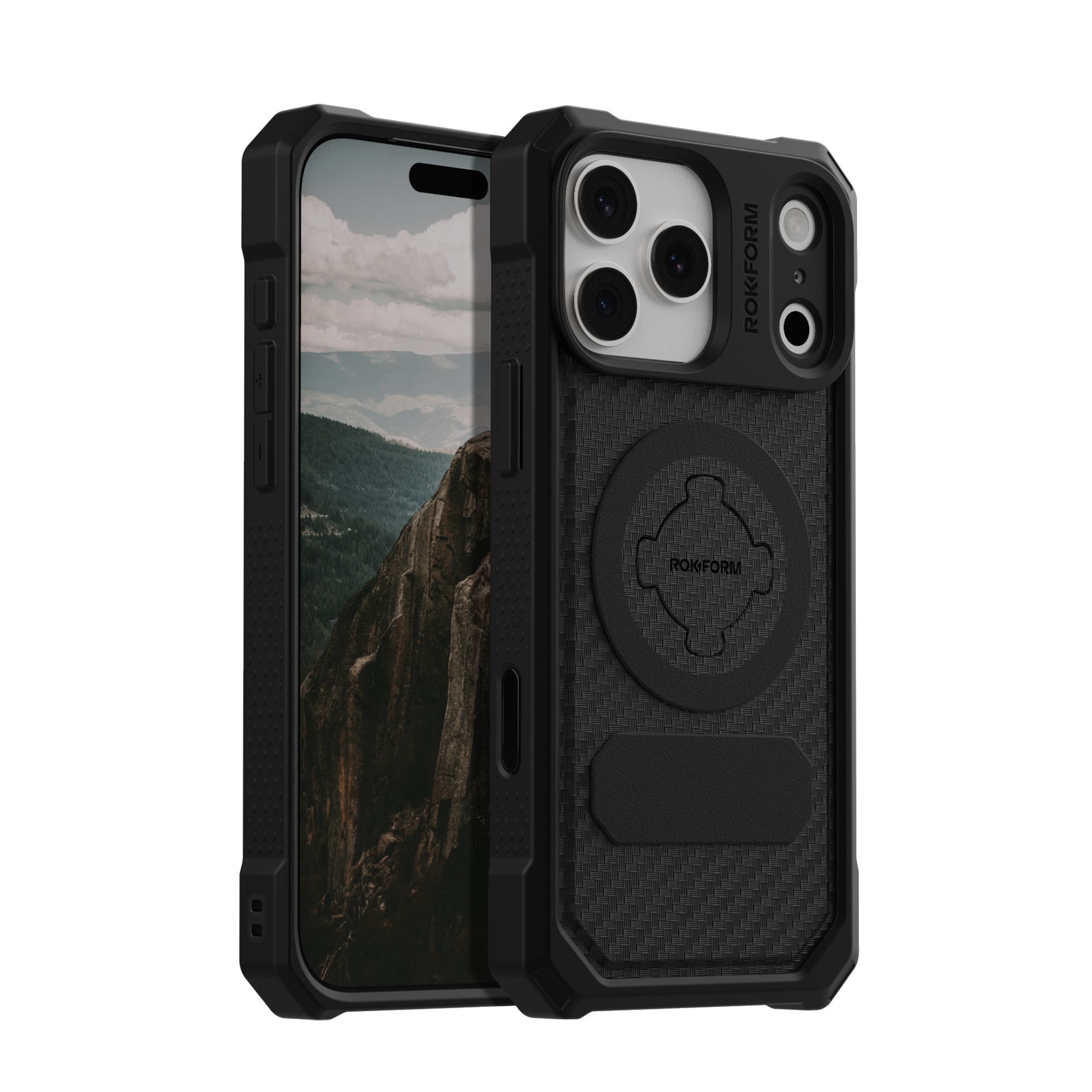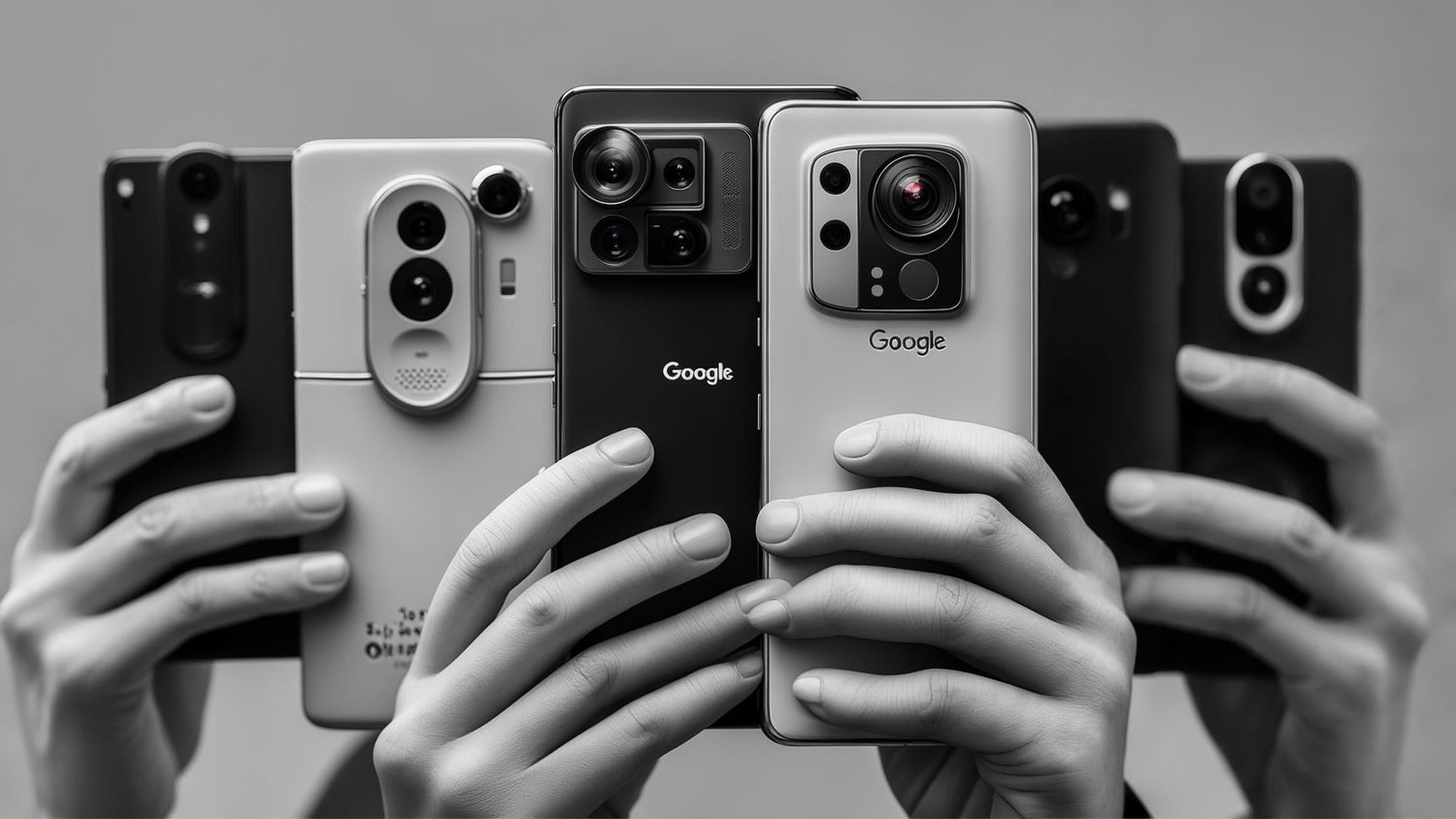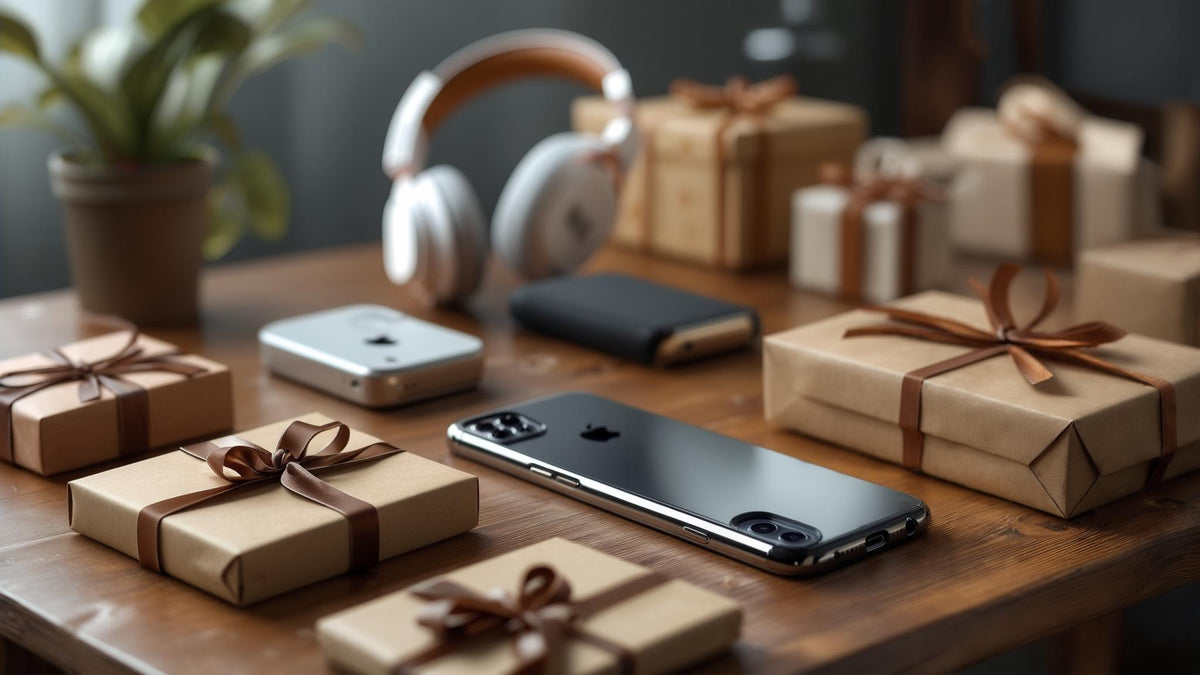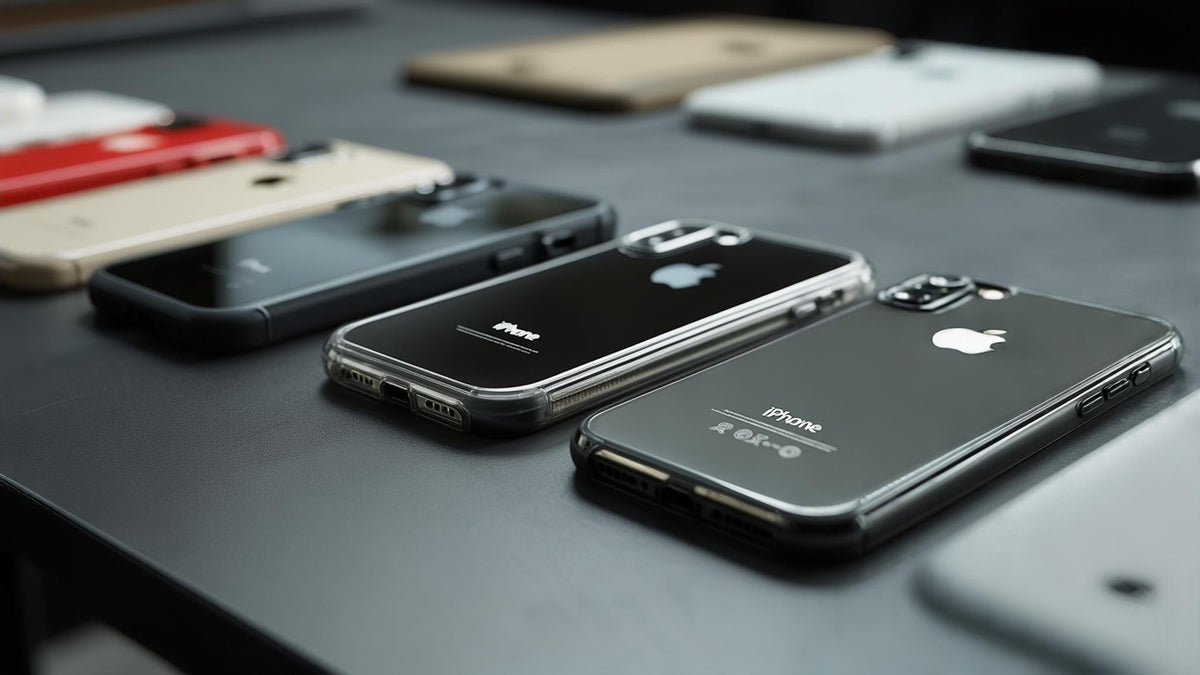Look, I get it. You're drowning in camera specs and marketing hype, trying to figure out which Pixel actually takes the best photos. I've been there. So I spent the last few months putting 25 different Pixel cameras through their paces – from sunrise shots on hiking trails to dimly lit restaurant dinners – to give you the real story.
Whether you're wondering which Google phone has the best camera or hunting for a best camera phone that won't demolish your savings account, this guide cuts through the noise. I'll give you honest performance ratings and real-world recommendations for every budget and shooting style.
Table of Contents
TL;DR: Quick Camera Recommendations
What Makes Google Pixel Cameras Special
How We Evaluated These 25 Pixel Cameras
Category 1: Overall Best Camera Performance (4 phones)
Category 2: Low-Light Photography Champions (4 phones)
Category 3: Video Recording Excellence (4 phones)
Category 4: Portrait Photography Masters (4 phones)
Category 5: Zoom Capability Leaders (4 phones)
Category 6: Best Value Camera Options (5 phones)
Detailed Camera Analysis: Top Performers
Performance Ratings Across Key Features
Protecting Your Pixel Camera Investment
Final Thoughts
TL;DR: Quick Camera Recommendations
Bottom line: The Pixel 8 Pro is the camera king, but honestly? The 7a gives you 90% of the magic at half the price. Here's what actually matters for your wallet and your photos:
Best Overall: Google Pixel 8 Pro dominates with 5x optical zoom and AI wizardry
Best Value: Pixel 7a delivers flagship camera quality without the flagship price tag
Best Low-Light: Pixel 8 Pro and 8 make darkness look like daylight
Best Video: Pixel 8 Pro turns your shaky footage into cinematic gold
Best Portraits: Pixel 8 Pro creates that DSLR-style background blur naturally
Best Zoom: Pixel 8 Pro's 5x optical zoom actually works (shocking, I know)
Budget Winner: Pixel 6a takes better photos than phones costing twice as much
When people ask which Google phone has the best camera, the Pixel 8 Pro is the obvious answer. But here's the thing – unless you're a serious photographer or content creator, you might be happier with something cheaper that still delivers incredible results.
What Makes Google Pixel Cameras Special
Here's the thing about Pixel cameras – they're not winning because they have the biggest sensors or the most megapixels. Google took a completely different approach. Instead of cramming more hardware into the phone, they decided to get really, really good at software.
The Magic is in the Math
Think of it this way: other phones try to capture the perfect photo in that split second you press the shutter. Pixels capture a decent photo, then spend the next few seconds making it incredible. That's computational photography in plain English.
Magic Eraser – You know that tourist who photobombed your perfect sunset shot? Gone. Just circle them and watch them disappear like they were never there.
Real Tone – Finally, a camera that doesn't wash out darker skin tones or make everyone look like they need more sunlight.
Night Sight – This one still blows my mind. Point your phone at what looks like complete darkness, wait a few seconds, and suddenly you've got a photo that looks like you had professional lighting.
Portrait mode – Creates that blurry background effect without needing multiple cameras. It's not always perfect, but when it works, people assume you used a fancy DSLR.
AI-Powered Enhancements
The newer phones add even cooler tricks that make every Pixel camera feel like having a professional photographer in your pocket:
Best Take combines multiple group photos so everyone's smiling (no more "can we take another one?")
Magic Audio Eraser removes background noise from videos (goodbye, leaf blower interruptions)
Live Translate works directly in your camera viewfinder (tourist mode activated)
Smart composition suggests better framing automatically (like having an art teacher looking over your shoulder)
For photographers who demand rugged protection while capturing stunning images, our Google Pixel 8 Pro rugged case ensures your camera investment stays protected during outdoor adventures and challenging shooting conditions.
Real-World Magic Eraser Success: A photographer captured a perfect sunset landscape but noticed power lines cutting through the frame. Using Magic Eraser on their Pixel 8, they simply circled the unwanted power lines and watched them disappear seamlessly, leaving a clean horizon. The AI automatically filled in the sky texture, creating a professional-looking image that would have required expensive editing software on other phones.
How We Evaluated These 25 Pixel Cameras
I didn't just look at specs sheets and call it a day. I actually used these phones. A lot. Here's what I tested:
Real-World Scenarios
Family dinners in terrible restaurant lighting
Kids' soccer games (good luck getting them to stay still)
Weekend hiking trips with dramatic lighting
Late-night city photography
Video calls that don't make you look like a zombie
What Actually Matters
Does Night Sight work when you really need it?
Can you actually read the text in that document you photographed?
Do people look like people in portraits, not plastic dolls?
Will your vacation videos make people seasick from shaky footage?
I weighted computational photography heavily (30%) because that's what makes Pixels special. Hardware quality matters too (25%), but a mediocre sensor with great AI beats a great sensor with terrible processing every time.
Evaluation Criteria |
Weight |
Key Metrics |
Testing Scenarios |
|---|---|---|---|
Computational Photography |
30% |
AI processing speed, feature accuracy |
Magic Eraser, Night Sight, Portrait mode |
Hardware Quality |
25% |
Sensor size, aperture, OIS |
Low-light, zoom, stabilization tests |
Video Capabilities |
20% |
4K quality, stabilization, audio |
Action shots, handheld recording |
Real-World Performance |
15% |
Consistency, reliability, speed |
Daily usage, challenging conditions |
Software Support |
10% |
Update frequency, new features |
Long-term testing, feature additions |
Category 1: Overall Best Camera Performance
These four phones are the all-stars – the ones that consistently deliver no matter what you throw at them.
1. Google Pixel 8 Pro - The Show-Off
This is Google's "hold my beer" phone. Everything you can do with a Pixel camera, this does better. The 5x optical zoom actually works (unlike those sketchy "digital zoom" claims), and the temperature sensor means your photos have accurate colors whether you're in harsh office lighting or golden hour sunshine.
What makes it special:
That 5x zoom is genuinely useful for concerts, sports, or spying on your neighbors (kidding!)
Pro controls for when you want to get nerdy with settings
Best Take feature saves every group photo from having that one person with their eyes closed
Real talk: It's expensive, and it's big. If you have small hands or small budgets, keep reading.
2. Google Pixel 8 - The Sweet Spot
Here's the secret: this phone has almost identical camera processing to the Pro. The main difference? No telephoto lens and a simpler ultra-wide camera. For most people, this is actually the better buy.
The 2x zoom uses AI trickery instead of a dedicated lens, and honestly? It works better than it has any right to. Plus you get all the computational photography magic without the premium price tag.
3. Google Pixel 7 Pro - The Smart Choice
Still a fantastic camera, even though it's last generation. The 4x optical zoom gives you serious reach, and Google's been updating the camera software, so it keeps getting better.
Why consider it: You can find these for significantly less than the 8 Pro now, but you're getting like 85% of the performance. That's solid value.
4. Google Pixel 7a - The Giant Killer
This phone has no business being this good at photography for the price. It has the same computational photography brains as phones costing twice as much. The only compromises are build quality and some advanced features you probably won't miss.
Perfect for: Anyone who wants flagship-quality photos without flagship prices.
Category 2: Low-Light Photography Champions
Night photography separates the good cameras from the great ones. These four make darkness their playground.
5. Google Pixel 8 Pro - The Night Owl
That f/1.68 aperture on the main camera is like having bigger pupils – it just sucks in more light. Combined with Google's Night Sight wizardry, you'll get photos in conditions where other phones give up entirely.
Party trick: Astrophotography mode. Set it on a tripod, point it at the stars, and prepare to have your mind blown. It literally captures the Milky Way.
6. Google Pixel 8 - Same Magic, Smaller Package
Shares identical Night Sight processing with the Pro. The only difference is you don't get that amazing low-light telephoto performance, but the main camera is just as impressive in the dark.
Professional photographers capturing low-light scenes need reliable protection for their devices. Our Google Pixel 9 Pro XL rugged case provides military-grade protection while maintaining full camera functionality for challenging nighttime photography sessions.
Night Sight in Action: During a camping trip, a user wanted to capture the Milky Way with their Pixel 7 Pro. Traditional smartphone cameras would show only darkness, but Night Sight's astrophotography mode automatically detected the tripod setup and captured a 4-minute exposure. The result revealed thousands of stars and the galaxy's structure, rivaling dedicated camera equipment costing thousands more.
7. Google Pixel 7 Pro - Still Impressive
Night Sight on the 7 Pro is like having night vision goggles. It's not quite as refined as the newer phones, but it'll still capture details in darkness that your eyes can't even see.
8. Google Pixel 6 Pro - The Foundation
This is where Google really nailed the Night Sight formula. Still competitive today, which says something about how far ahead Google was when this launched.
Category 3: Video Recording Excellence
If you're creating content for social media or just want your family videos to not look like they were shot during an earthquake, these phones deliver.
9. Google Pixel 8 Pro - The Content Creator's Dream
Cinematic Pan makes your random panning shots look like they were planned by a film director. Action Pan keeps moving subjects sharp while blurring the background. It's the kind of stuff that makes people think you know what you're doing.
Professional Video Tools:
4K recording that doesn't drain your battery in minutes
Audio Zoom that focuses sound on what you're filming
Magic Audio Eraser for cleaning up background noise
10. Google Pixel 8 - Steady as a Rock
The stabilization on this phone is genuinely impressive. You can walk and film, and the footage comes out smooth enough that people won't get motion sickness watching it.
11. Google Pixel 7 Pro - Reliable Performer
Solid 4K video with good stabilization. Nothing fancy, but it gets the job done well.
12. Google Pixel 7 - The Dependable Option
Good enough for most people's video needs. Won't win any film festivals, but your vacation videos will look great.
Category 4: Portrait Photography Masters
Portrait mode can make or break a phone camera. These four nail it consistently.
13. Google Pixel 8 Pro - The Portrait Artist
The edge detection is scary good. It knows the difference between hair and background, even with complex lighting. Real Tone ensures everyone looks like themselves, not some idealized (or washed out) version.
14. Google Pixel 8 - Same Brains, Same Results
Identical portrait processing to the Pro. Unless you specifically need that telephoto portrait capability, this delivers the same natural-looking results.
15. Google Pixel 7a - Budget Portrait Champion
Getting flagship-level portrait processing at this price point feels like cheating. The results are genuinely impressive for what you pay.
16. Google Pixel 6a - Solid and Reliable
Not quite as refined as the newer models, but still produces portraits that'll make people ask if you used a "real camera."
Portrait photographers working in various environments benefit from versatile mounting solutions. The magnetic tripod phone mount and adapter enables stable portrait setups for professional-quality results with any Pixel camera.
Professional Portrait Results: A wedding photographer used their Pixel 8 Pro as a backup camera during a reception. The Real Tone technology accurately captured diverse skin tones across different ethnicities, while the portrait mode created beautiful bokeh that separated subjects from busy backgrounds. The results were so impressive that several images made it into the final wedding album alongside photos from professional DSLR cameras.
Category 5: Zoom Capability Leaders
When you need to get closer to the action (or stay far away from it), these phones deliver the reach.
17. Google Pixel 8 Pro - The Zoom King
That 5x optical zoom is the real deal. Concert photography, wildlife, sports – this phone can actually capture distant subjects with detail instead of pixelated mush.
Zoom Excellence:
48MP telephoto sensor that doesn't fall apart in low light
Optical image stabilization keeps zoomed shots sharp
Digital zoom beyond 5x that's actually usable
18. Google Pixel 7 Pro - Solid Reach
4x optical zoom gives you good range for most situations. Not quite as impressive as the 8 Pro, but still very capable.
19. Google Pixel 6 Pro - The Pioneer
Google's first serious attempt at telephoto, and they nailed it. Still competitive today.
20. Google Pixel 8 - The Clever Alternative
No dedicated telephoto lens, but the AI-enhanced 2x zoom is surprisingly good. It's computational zoom done right.
Pixel Model |
Optical Zoom |
Digital Zoom Quality |
Telephoto Sensor |
Best Use Cases |
|---|---|---|---|---|
Pixel 8 Pro |
5x |
Excellent up to 30x |
48MP f/2.8 |
Wildlife, sports, portraits |
Pixel 7 Pro |
4x |
Good up to 20x |
48MP f/3.5 |
Events |
Pixel 6 Pro |
4x |
Good up to 20x |
48MP f/3.5 |
General photography, portraits |
Pixel 8 |
2x (AI) |
Good up to 10x |
None (computational) |
Street photography, casual zoom |
Category 6: Best Value Camera Options
Great cameras don't have to cost a fortune. These five prove it.
21. Google Pixel 7a - The Value King
This phone is almost unfair to the competition. Flagship camera features at mid-range pricing. If you're budget-conscious but refuse to compromise on photo quality, this is your phone.
Value Proposition:
Same computational photography as phones costing twice as much
64MP main sensor with optical image stabilization
Night Sight that rivals flagship models
Build quality that doesn't feel cheap
22. Google Pixel 6a - The Budget Champion
Still using the same main sensor as the original Pixel 6. That's flagship hardware from just a few years ago, now available at budget prices.
23. Google Pixel 7 - The Reasonable Choice
All the computational photography goodness without the premium price tag. A solid middle-ground option.
24. Google Pixel 6 - The Entry Point
Getting a bit long in the tooth, but still takes better photos than most phones costing twice as much.
25. Google Pixel 8 - Premium Features, Fair Price
More expensive than the budget options, but you're getting current-generation camera tech. Worth it if you can stretch the budget.
Detailed Camera Analysis: Top Performers
Let me break down the technical stuff for the phones that really matter, without putting you to sleep with spec sheets.
Google Pixel 8 Pro - The Complete Package
What's Inside:
Main Camera: 50MP with f/1.68 aperture (that's really wide for smartphone standards)
Ultra-Wide: 48MP that doesn't fall apart at the edges like most ultra-wides
Telephoto: 48MP with 5x optical zoom that actually works
Front Camera: 10.5MP that makes video calls bearable
The Cool Stuff:
Temperature sensor for accurate white balance (sounds boring, but your photos will have better colors)
Pro camera controls for when you want to pretend you know photography
Best Take for perfect group photos (seriously, this saves so many family gatherings)
Magic Audio Eraser that removes that annoying background noise from videos
The Pixel 8 Pro is like having a professional photographer's toolkit in your pocket. The temperature sensor might sound like marketing fluff, but it genuinely helps with color accuracy in tricky lighting situations.
Google Pixel 8 - The Smart Buy
Camera Setup:
Main Camera: 50MP with f/1.68 aperture (same as the Pro)
Ultra-Wide: 12MP that gets the job done
Front Camera: 10.5MP for decent selfies
Why It's Great:
2x optical quality zoom through AI wizardry (no dedicated telephoto needed)
Same computational photography brain as the Pro
All the Magic Eraser goodness
Smaller size that actually fits in your pocket
The Pixel 8 proves you don't need a telephoto lens for good zoom. The AI-enhanced 2x zoom delivers results that'll make you forget it's not "real" optical zoom.
Google Pixel 7 Pro - The Value Veteran
Hardware Specs:
Main Camera: 50MP with f/1.85 aperture
Ultra-Wide: 12MP for those dramatic landscape shots
Telephoto: 48MP with 4x optical zoom
Front Camera: 10.8MP
Still Relevant Because:
Proven computational photography that keeps getting better with updates
4x optical zoom that's genuinely useful
Reliable performance across all lighting conditions
You can find these at great prices now
Despite being last generation, the 7 Pro holds its own. Google's commitment to software updates means this phone actually takes better photos now than when it launched.
Performance Ratings: The Real Talk
Instead of boring you with endless spec comparisons, here's what actually matters:
Computational Photography Excellence
Pixel 8 Pro: ⭐⭐⭐⭐⭐ - The AI features are genuinely useful, not just marketing gimmicks
Pixel 8: ⭐⭐⭐⭐⭐ - Same processing power as the Pro, identical results
Pixel 7 Pro: ⭐⭐⭐⭐ - Strong AI processing that keeps improving with updates
Pixel 7a: ⭐⭐⭐⭐ - Flagship AI features in a budget package (still mind-blowing)
Pixel 6 Pro: ⭐⭐⭐⭐ - Google Tensor debut with solid performance
Pixel 6a: ⭐⭐⭐⭐ - Budget phone with flagship brains
Hardware Quality Assessment
Pixel 8 Pro: ⭐⭐⭐⭐⭐ - Top-tier sensors that actually make a difference
Pixel 8: ⭐⭐⭐⭐ - Great main camera, simplified but effective setup
Pixel 7 Pro: ⭐⭐⭐⭐ - Solid hardware across all lenses
Pixel 7a: ⭐⭐⭐ - Good main camera, adequate everything else
Pixel 6 Pro: ⭐⭐⭐⭐ - Strong triple camera setup for its time
Pixel 6a: ⭐⭐⭐ - Flagship sensor in budget clothing
Video Recording Capabilities
Pixel 8 Pro: ⭐⭐⭐⭐⭐ - Professional features that actually work
Pixel 8: ⭐⭐⭐⭐ - Excellent stabilization, great for content creation
Pixel 7 Pro: ⭐⭐⭐⭐ - Solid 4K performance
Pixel 7a: ⭐⭐⭐ - Good video quality for the price
Pixel 6 Pro: ⭐⭐⭐ - Decent video capabilities
Pixel 6a: ⭐⭐⭐ - Basic but functional video recording
Low-Light Performance Excellence
Pixel 8 Pro: ⭐⭐⭐⭐⭐ - Night Sight that borders on supernatural
Pixel 8: ⭐⭐⭐⭐⭐ - Identical low-light magic to the Pro
Pixel 7 Pro: ⭐⭐⭐⭐ - Very impressive Night Sight performance
Pixel 7a: ⭐⭐⭐⭐ - Flagship-level low-light at budget prices
Pixel 6 Pro: ⭐⭐⭐⭐ - Strong Night Sight across multiple lenses
Pixel 6a: ⭐⭐⭐ - Good low-light performance considering the price
Build Quality and Durability
Pixel 8 Pro: ⭐⭐⭐⭐ - Premium build, but that camera bar is a drop risk
Pixel 8: ⭐⭐⭐⭐ - Solid construction, manageable size
Pixel 7 Pro: ⭐⭐⭐ - Good build quality with some durability concerns
Pixel 7a: ⭐⭐⭐ - Adequate protection for the price range
Pixel 6 Pro: ⭐⭐⭐ - Distinctive design with practical compromises
Pixel 6a: ⭐⭐⭐ - Reasonable durability for budget category
Protecting Your Investment
Here's something nobody talks about: these advanced camera systems are expensive to repair. A cracked camera lens or damaged sensor can cost hundreds to fix.
The camera bump on newer Pixels makes them especially vulnerable. When you set the phone down, it's resting on that camera module. One wrong move and you're looking at a repair bill that costs more than a good case.
Why Camera Protection Matters
Modern Pixel cameras feature complex multi-lens systems with delicate components. A single drop can damage lens alignment, crack protective glass, or disrupt optical image stabilization mechanisms. These repairs often cost more than the protection needed to prevent them.
Rokform cases provide comprehensive protection specifically designed for camera-focused smartphones. The 6-foot drop protection includes specialized coverage for camera modules, ensuring your Pixel's photography capabilities remain intact even after impacts.
Built for Active Photography
Whether you're capturing action shots during outdoor adventures, documenting events as a professional photographer, or working in challenging environments, Rokform's rugged polycarbonate construction protects your Pixel without interfering with camera ergonomics.
Secure Mounting for Better Shots
Rokform's patented RokLock™ system and industrial-grade MAGMAX™ magnets enable secure mounting for enhanced photography:
Stable video recording during motorcycle rides or action sports
Hands-free photography setups for time-lapse or group shots
Vibration dampening that protects sensitive camera components during motion
Versatile mounting options for creative photography angles
For photographers who need stable mounting solutions, our motorcycle handlebar iPhone mount provides secure attachment during dynamic shooting scenarios while protecting your Pixel's advanced camera system.
Quality protection isn't just about drop protection – it's about preserving the precision engineering that makes these cameras special. Lens alignment, sensor calibration, optical image stabilization – all of it can be thrown off by impacts that might not even crack your screen.
Final Thoughts
Here's the bottom line: you can't really go wrong with any Pixel camera, even the older ones. Google's computational photography is that good.
If money's no object: Pixel 8 Pro. It's the complete package and represents the pinnacle of which Google phone has the best camera discussion.
If you want the best value: Pixel 7a. Seriously, this phone punches way above its weight class and proves that the best camera phone doesn't always need flagship pricing.
If you need zoom: Any of the Pro models with telephoto lenses will give you that reach without the digital zoom disappointment.
If you're on a tight budget: Pixel 6a still takes better photos than phones costing twice as much.
The real magic of Pixel cameras isn't in the specs – it's in how they make everyone feel like a better photographer. Point, shoot, and let Google's AI do the heavy lifting. Your photos will look better, and isn't that the whole point?
Consider how you actually use your camera. Casual photographers who primarily share photos on social media will find the Pixel 8 or 7a more than sufficient. Enthusiasts who frequently shoot in challenging conditions or need extensive zoom capabilities should consider the Pro models.
Remember that Google's computational photography means even older Pixel phones continue receiving software updates that improve camera performance. This longevity makes Pixel cameras smart long-term investments that actually get better over time.
Whatever Pixel you choose, protect that investment with quality protection that won't interfere with your photography. Your camera is only as good as its condition, and proper rugged phone cases ensure years of reliable performance capturing life's important moments.




